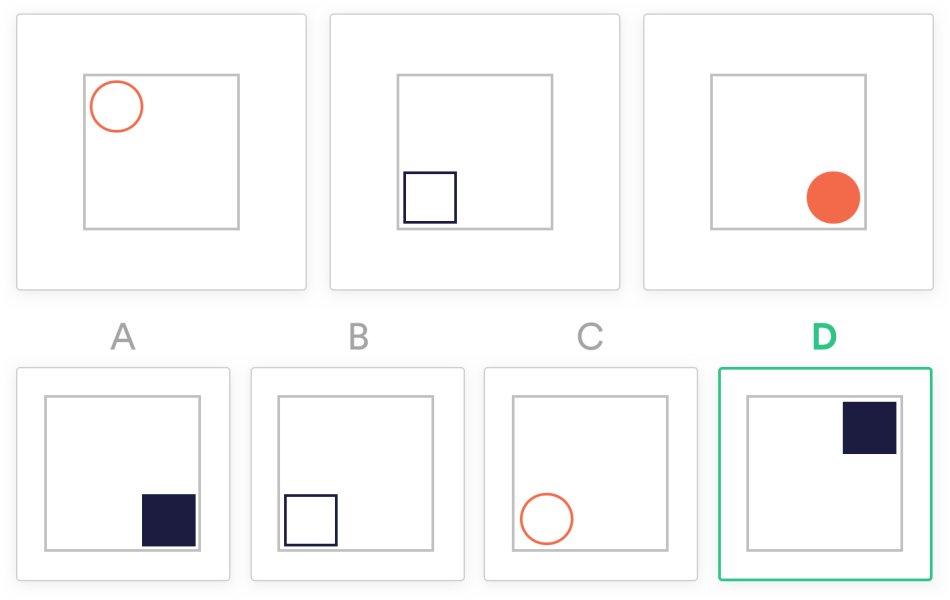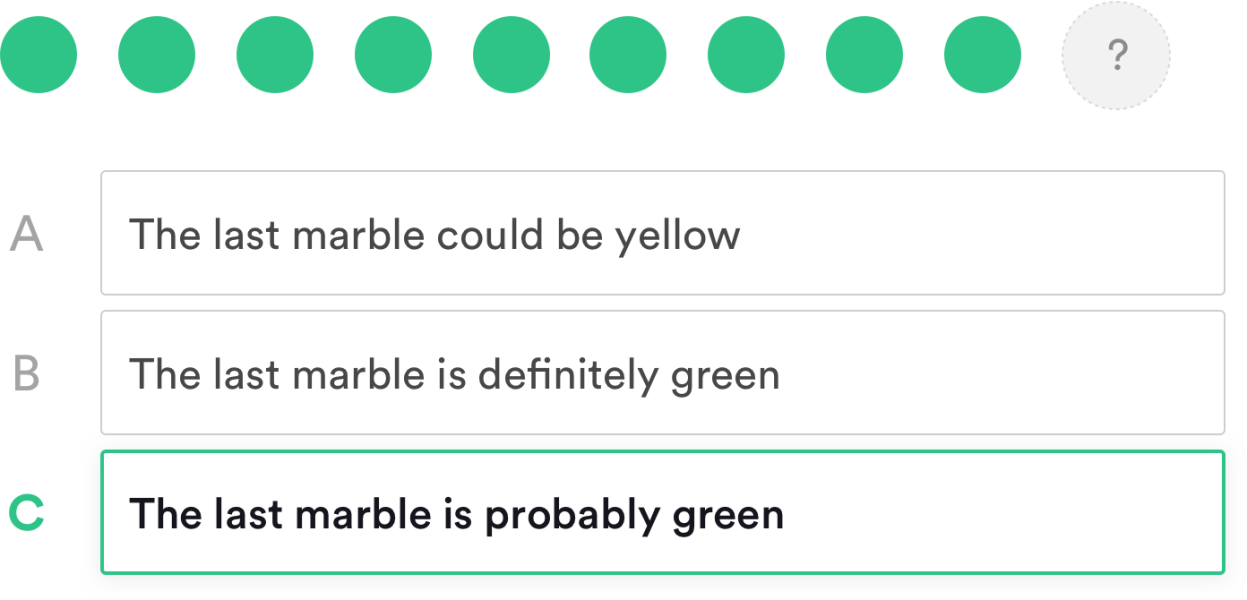What is an inductive reasoning test?
Inductive reasoning tests require you to identify the relationships between shapes and figures by spotting rules and patterns, and to apply these to find the answer. Patterns usually involve alternation, rotation, reflection, replacement or translation, or a combination of these.
These types of tests provide employers with an insight into how you think and how you approach new rules and situations. As well as assessing your general intelligence, they can reveal your levels of creativity and your ability to learn and apply new information.
They may be used in the job application process for all kinds of industries, but are particularly popular in roles involving engineering, science and IT. To do well at inductive reasoning tests you will need to be able to apply open-minded and explorative thinking skills, trying out different possible solutions in your head to reach the correct answer.
What's the difference between inductive and deductive tests?
Inductive reasoning uses specific observations to reach broader, more general conclusions, while deductive reasoning works the other way around, moving from broad generalisations to specific observations.
In deductive reasoning, we explore and reject a number of possible outcomes to reach one possible answer. With inductive reasoning, we may reach a general conclusion based on what we have observed – but this still allows for the possibility that the conclusion is false, even if all of the premises are true.
For example: All of the swans we have seen are white therefore We expect that all swans are white. In this instance, the premises provide support for the conclusion, but they do not guarantee it. With inductive reasoning, there is a degree of certainty but it is not absolute.
How best to prepare for an inductive reasoning test
The best way to prepare for an inductive reasoning test is to do lots of practice. If you are familiar with the types of questions you will be facing, and have developed strategies and techniques to tackle them, you are less likely to freeze or panic on the day.
You should also try to find out as much as you can about the test you will be taking. As mentioned previously, the terms inductive reasoning, diagrammatic reasoning, logical reasoning and abstract reasoning can be used interchangeably but may involve subtle differences, so check with the recruiter what type of test to expect.
If possible, you should also try to find out which test provider the recruiter uses. You can then visit the relevant website to get an idea of the format and content of the questions you are likely to encounter.
Our article on how to prepare for inductive reasoning tests has more advice.
Enhancing your familiarity with various test formats and question styles through practice is crucial for inductive reasoning tests. Equally important is understanding the specific type of test you’ll encounter, as inductive reasoning can encompass a range of question types. Investigating the test provider will give you insights into the test’s structure and help tailor your preparation effectively.
Common inductive reasoning test publishers
SHL inductive reasoning. SHL’s inductive reasoning tests are usually around 25 minutes long. Questions consist of five symbols following a pattern, with candidates required to choose the missing symbol from a selection of multiple-choice options.
AON discovering rules. Also known as scales ix, this test consists of 20 questions to be completed in just five minutes. In each question, the candidate will be presented with a series of figures or images that follow a rule, and must select the one figure that does not match.
Kenexa logical reasoning. This is very similar to SHL’s inductive reasoning test. You will generally have about 20 minutes to answer 25 questions, which will be based around finding the rule governing a series of figures and then selecting the missing figure.
Saville abstract reasoning. This test may also be referred to as inductive logical reasoning and again is very similar to the SHL and Kenexa tests. For each question, you will see a sequence of shapes and must find the logical pattern connecting them, and then choose the shape missing from the middle or end of the sequence.
Talent Q logical reasoning. You will be presented with a series of symbols following a logical pattern and must decide what comes next. The questions are multiple-choice but there are more answer options than most other tests – between seven to 14 for each question. The test is also adaptive, so it gets harder the more questions you answer correctly.













